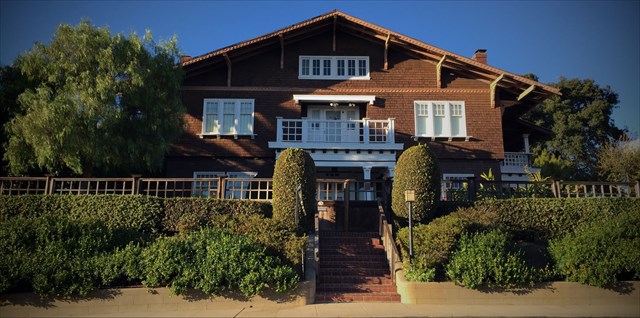Instructions for the "Vallejo Historical Landmarks GeoTrail"
1. Obtain a VHLGT Passport. You can pick one up in person at either the Vallejo Visitors Bureau, 289 Mare Island Way or the Vallejo Naval and Historical Museum, 734 Marin Street. Current hours of operation are listed on GC65Y05: VHLGT Trailhead.
2. When you find a VHLGT geocache, sign the log and record the code word specific for that Landmark(s) on your passport.
3. Share your experiences online when you get home. Log into your geocaching.com account and track all of the caches you’ve found. Let us know in your log if you’re a first time visitor to Vallejo.
Limited Edition Geocoin
• Find at least 16 Vallejo Historical Landmarks GeoTrail geocaches (passport with code word recorded) and receive a free Visit Vallejo geocoin. (Only one geocoin per household or team.)
To Obtain Geocoin
• After finding the caches, each team will be required to stop by either the Vallejo Visitors Bureau or the Vallejo Naval and Historical Museum to have their code words verified. Coins will not be mailed. Please consider hours of operation when planning your visit.
* Geocoins are available while supplies last.
About This Architectural Historical Landmark
Well known architect Julia Morgan and prominent Vallejo architect William A Jones were connected with this home built for GW and Agnew Wilson which was completed in 1909. This home is a superb example of its style, with a highly sophisticated interaction of delicate details and massive forms. The large 2 -1/2 story Craftsman style house presents a massively proportioned gable façade to Capital Street and the wide overhangs are supported by strongly expressed carved brackets. This creates a strong image of a Swiss chalet. The home is raised slighted with sloping landscape that creates a pedestal for the house. Given the strong craftsman style aesthetic of the house, the front porch is surprisingly classical revival in form and detail.

Julia Morgan (January 20, 1872 – February 2, 1957) designed more than 700 buildings in California and is perhaps best known for her work on Hearst Castle in San Simeon, California. Morgan was the first woman to be admitted to the architecture program at l'École nationale supérieure des Beaux-Arts in Paris and the first woman architect licensed in California. She designed many buildings for institutions serving women and girls including YWCA buildings and buildings for Mills College. Julia Morgan is the first woman to receive the AIA Gold Medal, which she received posthumously in 2013.
Morgan graduated from Oakland High School in 1890 and enrolled in the University of California. One of the lecturers of her senior year was Bernard Maybeck, and along with classmate Arthur Brown, Maybeck mentored Morgan in architecture at his Berkeley home. He encouraged Morgan to continue her studies at the prestigious École nationale supérieure des Beaux-Arts in Paris where he had distinguished himself. She graduated in 1894 with a degree in civil engineering, the only woman in her engineering class. Morgan gained a year of work experience with Maybeck; then headed to Paris in 1896. The school had never before allowed a woman to study architecture and first denied entrance to Morgan because they did not accept women. In 1897, the school opened its entry process to women applicants. After returning from Paris, Morgan was employed by San Francisco architect John Galen Howard, who was supervising the University of California Master Plan. Morgan worked on several buildings on the Berkeley campus, including the Hearst Mining Building and an early proposal for Sather Gate. She was the primary designer for the Hearst Greek Theatre. Howard told a colleague that Morgan was "an excellent draftsman whom I have to pay almost nothing, as it is a woman." She saved her money and made plans to work on her own, and in 1904, Morgan was the first woman to obtain an architecture license in California. She opened her own office in San Francisco. She was employed as the architect of many buildings at Mills College. Another of her earliest works was North Star House in Grass Valley, California, commissioned in 1906.
Morgan's most famous patron was the newspaper magnate and antiquities collector William Randolph Hearst, who had been introduced to Morgan by his mother Phoebe Apperson Hearst, the chief patron of the University of California at Berkeley. In 1919, Hearst selected Morgan as the architect for La Cuesta Encantada, better known as Hearst Castle, which was built atop the family campsite overlooking San Simeon Harbor. Her work on 'the Castle' and San Simeon Ranch continued until 1947, ended only by Hearst's declining health. Morgan became William Randolph Hearst's principal architect, producing the designs for dozens of buildings, such as Phoebe Apperson Hearst's Wyntoon.
Julia Morgan's affiliation with the YWCA began when Phoebe Apperson Hearst recommended her for the organization's Asilomar summer conference center, a project she began in 1913. Morgan also designed YWCAs in California, Utah, Arizona, and Hawaii. Her YWCA building in San Francisco presently is used as the museum and homebase of the Chinese Historical Society of America (CHSA). Morgan made many architectural contributions to the women's college Mills College in the East Bay foothills of Oakland, California. Like her work for the YWCA, they were done in the hopes of advancing opportunities for women. Morgan's other projects include the redesign of the landmark Fairmont Hotel in San Francisco after it was damaged by the earthquake of 1906. She considered St. John's Presbyterian Church her finest Craftsman-style building. Other projects include the Chapel of the Chimes in Oakland.
Some of her residential projects, like the Wilson House , are ultimate bungalows. The style is often associated with the work of Greene and Greene and some of Morgan's other contemporaries and teachers. The buildings represent the Arts and Crafts Movement and the American Craftsman style of architecture.
